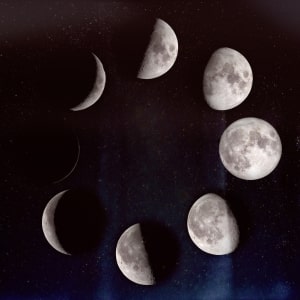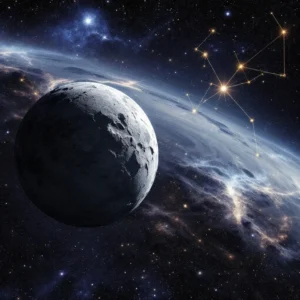The celestial ballet that unfolds in the night sky has fascinated humanity for centuries, with the moon playing a prominent role in this cosmic performance. Two key phases of the lunar cycle, the New Moon and the Full Moon, hold special significance in various cultures and have captivated the human imagination throughout history. Let’s delve into the mysteries of these celestial events and explore the question what is New Moon and Full Moon?

What is New Moon?
The New Moon marks the beginning of the lunar cycle when the moon is positioned between the Earth and the Sun. In this configuration, the side of the moon illuminated by the Sun faces away from the Earth, rendering it virtually invisible from our perspective. The darkened moon emerges as a silhouette against the radiant backdrop of the Sun, creating a mesmerizing celestial alignment.
During the New Moon phase, the gravitational forces of the Sun and the Moon combine, resulting in higher tides known as “spring tides.” While the New Moon itself remains hidden, its influence on Earth is palpable through these tidal shifts.
Culturally, the New Moon often symbolizes renewal, new beginnings, and introspection. Many traditions and rituals are tied to this phase, with some cultures considering it an auspicious time for setting intentions and starting fresh.
What is Full Moon?
In stark contrast to the New Moon, the Full Moon occurs when the Earth is positioned between the Sun and the moon. This alignment results in the entire illuminated face of the moon being visible from Earth. The moon appears round and full, casting a gentle glow across the night sky.
The gravitational forces during the Full Moon phase also contribute to spring tides. Interestingly, the Full Moon is often associated with heightened emotions and behaviors, giving rise to the term “lunacy.” While scientific evidence for a direct link between the Full Moon and human behavior remains inconclusive, the cultural fascination with the moon’s influence persists.
Various cultures have attached unique names to different Full Moons throughout the year, such as the Harvest Moon in autumn or the Strawberry Moon in summer. These names often reflect the seasonal significance of the Full Moon in agricultural and cultural practices.
Also Read: Rahu Moon Conjunction Remedies
The New Moon and Full Moon represent integral phases in the dance of shadows played out in the night sky. Beyond their astronomical significance, these lunar phases have woven themselves into the fabric of human culture, inspiring myths, traditions, and rituals across civilizations.
Whether heralding new beginnings under the veil of darkness or illuminating the night with its radiant fullness, the moon continues to be a celestial muse for poets, scientists, and dreamers alike. As we gaze up at the night sky, the cyclical beauty of the New Moon and Full Moon serves as a reminder of the timeless connection between the cosmos and the human spirit.





